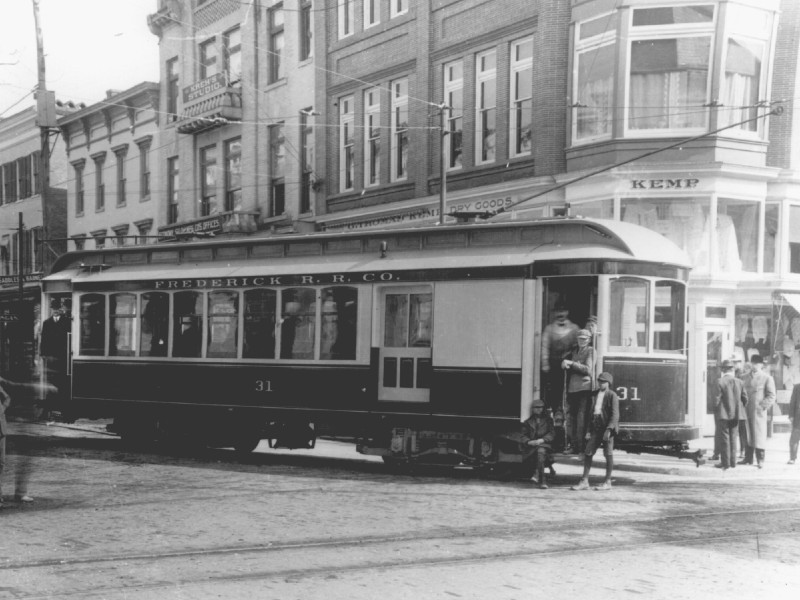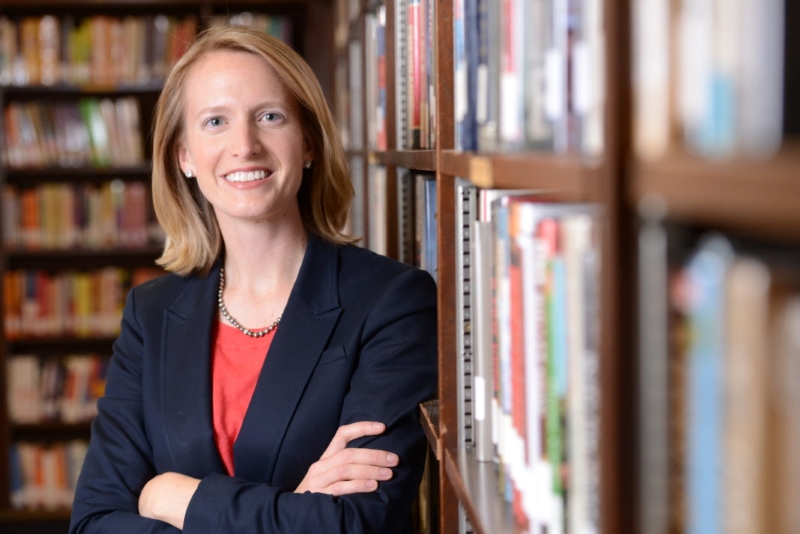Today we are revisiting Maryland Comptroller-elect Lierman’s words from a 2020 guest blog as she makes a powerful case for the important role historic preservation can play in helping Maryland grow smarter.
The Role of Historic Preservation in Winning the Battle for Smart Growth in Maryland
I did not run for office to save old buildings. If I had known when I first ran, however, what I know now, perhaps it would have been a talking point in my stump speeches. I say this now, five years after I was first elected, finally beginning to fully appreciate the role of preservation in achieving truly smart growth in Maryland and in turn helping to stop climate change and save our planet.
But before we wage any battles for smart growth, we need to ensure we are operating from the same assumption – that we’re at the same starting line. We have to start from the shared understanding that our state is going to grow – our population in Maryland is increasing. Growth is good, and perhaps inevitable, but good character is not inevitable. The question is not whether we will grow, but how we will grow.

The City of Baltimore skyline above historic rowhomes.
Will we grow our state in a way that adds values to communities and neighborhoods? In a way that promotes clean water and clean air? Will we grow in a way that is sustainable in an age of a changing climate? Will we grow in a way that addresses historic inequities in housing and access to amenities between white residents and people of color?
How we answer all of these questions depends, in part, on our willingness to look back where we came from and use the historic structures themselves as the backbone for our future growth. I live in Fell’s Point, one of the state’s most historic neighborhoods. It is a network of short blocks, variably-sized rowhomes, corner shops, and active park space. It is eminently livable. (The one major downside is the lack of transit – although there used to be tracks running along the main thoroughfare!).
Building off of neighborhoods like Fell’s Point is an important part of rebuilding our state and making room for growth. Historic preservation and revitalization was the original smart growth movement. Simply put; we cannot have truly sustainable development without reusing existing, historic structures.

Fells Point, Baltimore City.
I often think of the recycling triangle when I think about these issues. That little triangle is very powerful! It tells us to Reduce – Reuse – Recycle. You or I might think that is easy for a coke can or wine bottle. But it should be easy for an historic building as well. We try to reduce our use of plastic – why don’t we try to reduce our use of materials to build new homes? Why don’t we reduce the need to develop forest land and agricultural land? We can significantly reduce our waste if we reuse old structures and recycle them for new purposes, or reuse or recycle their parts.
When we are discussing sustainable development and smart growth, revitalization of existing communities and their historic places is the wisest form of economic redevelopment. That’s because when we invest and grow already-existing neighborhoods, we reduce our need for sprawl. When we reduce sprawl, we reduce the need to drive. When we reduce the need to drive, we cut down on our greenhouse gas emissions. Then we have cleaner air and better health outcomes.
In order to grow in the right way, we have to make sure that our growth is also economically viable. That means we have to ensure that incentives are aligned so that developers and builders and financiers see the fiscal value in smart growth. It can’t just be the “right thing to do” – it also has to make good financial sense. Interest in reuse of historic buildings downtown is unlikely to happen if developing wide open agricultural spaces remains a financially viable option. Adaptive reuse of historic buildings is more economically feasible in communities, therefore, when we protect open spaces and limit sprawl.
Maryland’s history is intertwined with open space – our agricultural spaces are just as important as the historic barns and farmhouses. Saving open space is so important to our future success as a state and in achieving our climate action goals. We are at a crossroads in land preservation — and protecting more land not only saves history but also protects water quality that is so important to keep our beloved Chesapeake Bay healthy.

Frederick County farmland near Jefferson, Maryland. Flickr user Mike Procario.
Across the nation and here in Maryland we are also facing an affordable housing crisis. Houses built before 1950 are disproportionately home to people with modest resources. There are historic vacant homes lining avenues in Baltimore and Cumberland, old farmhouses around the state, and old vacant homes in Salisbury, Hagerstown, and beyond. Revitalizing and reusing these homes takes incentives to keep them affordable for new families to purchase and build equity.
Here in Maryland, we’re also facing a mobility crisis. Fortunately, older buildings are often located in the most walkable, bikable, and densest areas. Revitalizing these historic structures helps ensure that people are close to jobs and viable transit options. Redevelopment of historic neighborhoods is extremely difficult in the absence of reliable and effective transit options. Traffic-choked roads and gridlock are barriers to the effective reuse of historic buildings and the revitalization of historic communities. That means we must be investing in transit options when we are seeking to redevelop our historic spaces. How much do I wish those old streetcar lines were still running around Baltimore!?

Frederick streetcar, ca. 1900. Photo from Maryland State Archive.
So think about the cities in our region that are growing – DC, Philadelphia, Pittsburgh. Their resurgence is simply not possible without restoration and reuse of historic buildings. And in Baltimore it is happening as well – one of the magical things about my neighborhood and neighborhoods like it around the city is the mix of old and new.
Smart growth principles are intrinsically connected to revitalization and preservation. Historic preservation plus environmental preservation adds up to economic development that can add value to communities without inequitable displacement. As we look ahead and plan for the future, Maryland must be pursuing and implementing policies that encourage and incentivize historic preservation to make sure we are not just growing – but that we are growing smart.
 State Delegate Brooke Lierman (District 46)
State Delegate Brooke Lierman (District 46)
Learn More About Preservation Maryland’s Advocacy Efforts

